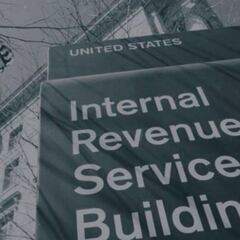Unemployment tax refund: how to calculate how much will be returned
The IRS is in the process of sending out tax refunds for unemployment benefits recipients who mistakenly paid tax on jobless support claimed in 2020.


The American Rescue Plan included a little-known clause which prevented taxes being levied on unemployment benefits received during 2020. The move was made to help jobless Americans during the pandemic, but not all were able to take advantage of it initially.
The legislation was not passed until mid-March, by which time millions had already filed their tax returns and paid taxes due. These people will now be due a hefty tax refund, which the IRS is currently in the process of distributing.
Read more
- Next round of adjusted tax returns for unemployment exclusion to go out mid-June
- Enhanced Child Tax Credit temporary unless Congress acts
- Nearly 4 million unemployed will lose benefits as 25 states opt out of federal programs
- Psaki suggests fourth stimulus check is unlikely
How many people are thought to be eligible for the unemployment tax refund?
The process of distributing tax refunds has been considerably tougher this year, as the IRS is tasked with doing so while overseeing the third round of stimulus checks and introducing the overhauled Child Tax Credit. This left the tax authority with a considerable backlog, some dating back to 2019, but it is now beginning to shift the outstanding payments.
Last Friday the IRS announced that over 3.1 million tax returns are newly eligible for the tax exemption have been processed, with more than 2.8 million expected to receive theirs this week.
In total, the IRS estimate that there are around 13 million people who could qualify for the unemployment tax refund. It remains to be seen how long it will take for those payments to be made, but if you think you may be eligible you can check online to find out how big a refund could be in store.
#TaxTip from the Taxpayer Advocate Service: Find out how to find your tax refund information: https://t.co/jVyaBJ9QD0. pic.twitter.com/2mlzFfb1qf
— Taxpayer Advocate (@YourVoiceAtIRS) June 7, 2021
How to calculate your unemployment benefits tax refund
The IRS is expected to continue working through the tax returns backlog for the rest of summer at least, meaning that it could be some time before your refund arrives. The next wave of payments is due to be made at some point in mid-June, but until then you may be able to work out how much you will receive.
Related stories
This handy online tax refund calculator provides a simplified version of the IRS’ 1040 tax form. By filling in the relevant information you can estimate how large a refund you have coming.
However bear in mind that the IRS will reduce that amount if you have an outstanding tax balance or any other related payments due. If they do make some adjustments, they will send you a letter within 30 days to explain the reason for the refund reduction.

